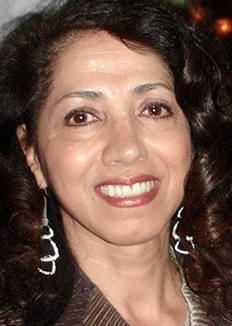


|
||
|
||
The unveiling of the Global Digital Compact’s (GDC) zero draft on April 1, 2024, heralds a critical juncture in the quest to frame a digital future that is equitable, secure, and human-centered. Orchestrated under the leadership of UN Secretary-General António Guterres, the initiative endeavors to forge a consensus-driven framework for global digital cooperation. This framework seeks not only to navigate the intricacies of technological evolution but also to counterbalance the burgeoning dominance of private sector forces in the technological domain.
As the GDC transitions from a phase of open consultations to a more structured process of governmental negotiations, this analytical examination dissects the draft’s content, its alignment with stakeholder contributions, and its broader implications for global digital governance.
Proposed in 2021, the GDC emerged from a recognition of the urgent need for a cohesive global approach to digital transformation. In the intervening years, the initiative has moved through phases of solicitation for contributions, intensive consultations, and now, into the final phase of refinement. This progression reflects a concerted effort to encapsulate a wide array of perspectives and concerns, particularly those emanating from the multifaceted community of internet stakeholders, albeit with apprehensions about the inclusivity of the negotiation process.
Submissions from this community have underscored a significant tilt towards participants from the Global North, spotlighting a critical need for ensuring a geographically balanced representation in the digital governance dialogue. Themes such as human rights in the digital realm, universal connectivity, and the preservation of an open internet have dominated these contributions, highlighting a consensus around the importance of a multistakeholder governance model, the expansion of global connectivity, and nuanced governance of data and Artificial Intelligence (AI), all without stifling innovation.
At its core, the GDC is ambitious, setting forth a vision for leveraging digital technologies to expedite progress toward the Sustainable Development Goals (SDGs) and carve out a sustainable, equitable digital future. The draft emphasizes digital technologies’ transformative potential in enhancing societal well-being, economic advancement, and environmental sustainability. It also acknowledges the myriad risks associated with digital misuse and the digital divide.
Key to the Compact is its commitment to fostering international cooperation and governance to bridge these divides, ensuring digital inclusivity, economic opportunities, and a secure digital landscape. The Compact proposes a set of specific objectives, including accelerating SDG progress through digital connectivity and literacy, enhancing digital public goods, expanding inclusion in the digital economy, promoting a secure digital environment, and establishing responsible governance frameworks for emerging technologies, notably AI.
Achieving the GDC’s lofty objectives necessitates coordinated actions across various sectors, including governments, the private sector, civil society, and international organizations. This coordination is underpinned by guiding principles focused on inclusivity, sustainability, innovation, and multi-stakeholder engagement. The Compact’s goals, such as achieving universal internet connectivity, developing national digital skills strategies, and advancing international data governance, reflect a holistic approach to harnessing digital technologies for the global good.
To support these aims, the Compact calls for the establishment of robust frameworks for digital privacy, enhanced cybersecurity measures, equitable data governance, and the promotion of safe, responsible AI development. Central to these efforts is the role of the United Nations in facilitating global digital cooperation, highlighting the need for a concerted, multi-stakeholder approach to address the challenges and opportunities presented by digital transformation.
The Global Digital Compact stands as a testament to the international community’s recognition of the urgent need for a coordinated approach to digital governance. Its success hinges on the ability to integrate and act upon the diverse inputs from the global multistakeholder community, ensuring the Compact’s relevance and responsiveness to the evolving digital landscape.
As the GDC moves towards finalization and implementation, the emphasis remains on ensuring that digital technologies serve as a force for good, promoting sustainable development, protecting human rights, and creating a more inclusive, equitable, and resilient digital future. The road ahead involves not only the realization of the Compact’s ambitious goals but also the continuous engagement of all stakeholders in shaping a digital governance framework that is both dynamic and inclusive.
In sum, the Global Digital Compact encapsulates a collective aspiration toward a digital future that prioritizes human development, security, and inclusivity. Its development process, emphasizing wide-ranging stakeholder input and international cooperation, sets a precedent for future efforts in global digital governance. As we inch closer to the September 2024 Summit of the Future, the GDC’s evolution from draft to final document will undoubtedly be observed with keen interest, as it embodies a critical step forward in harmonizing global efforts to harness digital transformation for the common good.
Sponsored byIPv4.Global

Sponsored byDNIB.com

Sponsored byWhoisXML API

Sponsored byRadix

Sponsored byVerisign

Sponsored byCSC

Sponsored byVerisign
